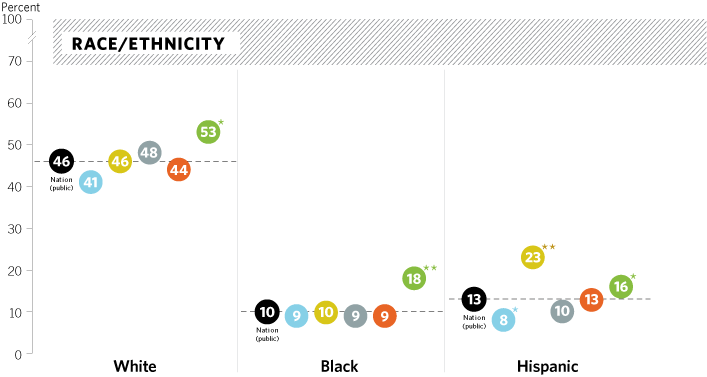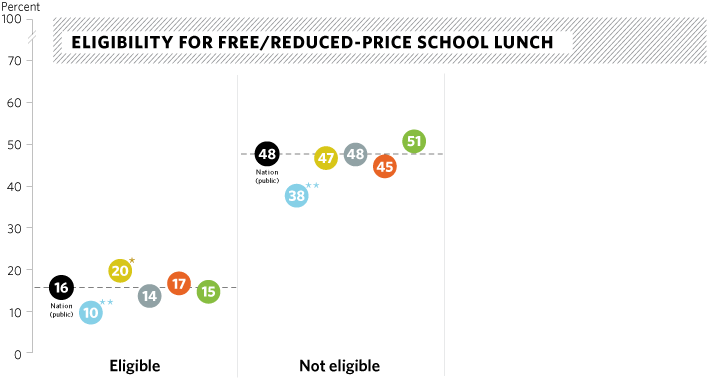Race/Ethnicity
 The percentages of Black students in Texas and Hispanic students in Florida at or above Proficient were higher than their peers in the nation and in the other Mega-States.
The percentages of Black students in Texas and Hispanic students in Florida at or above Proficient were higher than their peers in the nation and in the other Mega-States.
Percentage of fourth-grade students at or above Proficient in NAEP science, by
selected racial/ethnic groups and jurisdiction: 2009



Eligibility for free/reduced-priced school lunch
 The percentage of eligible students in California at or above Proficient was lower than their peers in the nation and in the other Mega-States.
The percentage of eligible students in California at or above Proficient was lower than their peers in the nation and in the other Mega-States.
Percentage of fourth-grade students at or above Proficient in NAEP science, by
eligibility for free/reduced-price school lunch and jurisdiction: 2009



School location
 The percentages of students attending city schools in Illinois and New York at or above Proficient were lower than their peers in the nation.
The percentages of students attending city schools in Illinois and New York at or above Proficient were lower than their peers in the nation.
Percentage of fourth-grade students at or above Proficient in NAEP science, by
selected school location and jurisdiction: 2009

